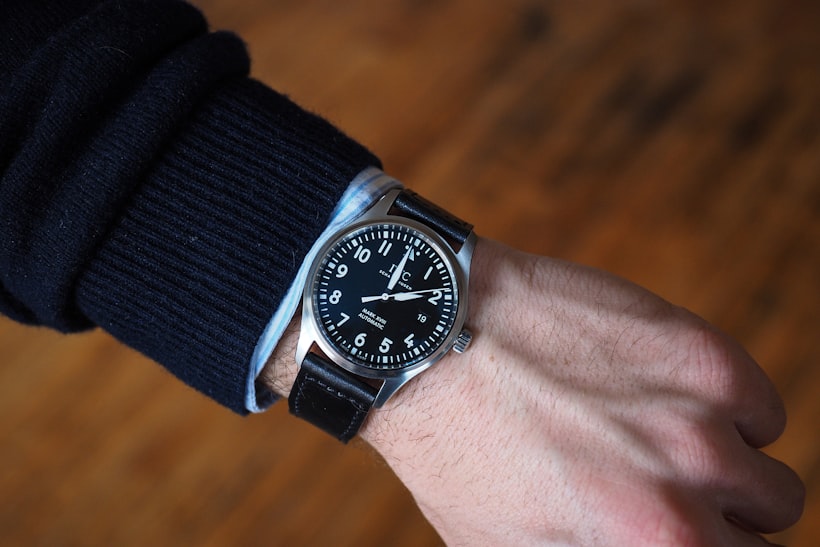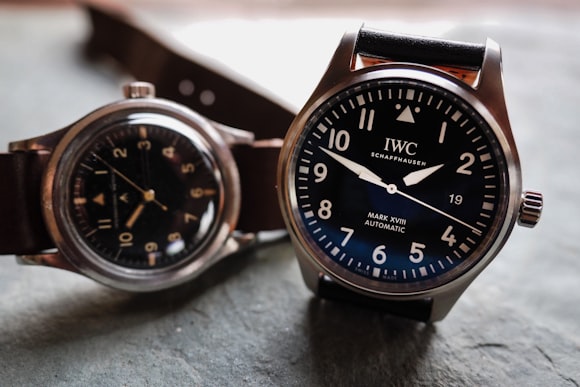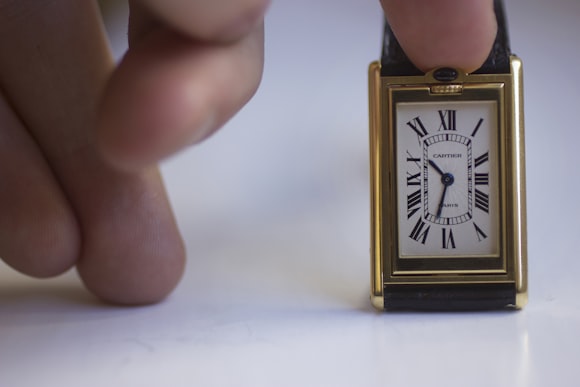I’m sure it’s out there somewhere, but it’s hard to think of a single wristwatch model from any company that excites as much of a sense of ownership, from owners and non-owners alike, as the Mark series from IWC. There are, arguably, better known watches – the Submariner springs to mind, for instance – but the Mark series is one in which IWC fans in particular, and watch enthusiasts in general, really feel a personal stake. Why is this the case? First of all, the Mark watches have a design with very broad appeal: they’re tool watches, and generally have been extremely basic in design, while at the same time being instantly recognizable and very attractive. That combination of completely utilitarian appearance and aesthetic appeal is very powerful – especially because the aesthetics were not deliberate, but rather, an organic consequence of utilitarian considerations, and therefore seem much more genuine than if the goal had been producing a design object per se. (Historically, that’s been a big part of the appeal of Panerai as well.)

Second, they’ve got an authentic history. IWC first made the Mark XI just after the end of the Second World War, and they were made all the way up to 1984. The Mark XI was subjected to extremely stringent testing; according to IWC Schaffhausen: Engineering Time Since 1868, the testing took 44 days, and was done in five sequences that evaluated the Mark XI across temperatures from -5 to over 46 degrees Celsius. It doesn’t hurt that the Mark XI used a widely respected, even revered, hand-wound in-house movement: the chronometer-grade IWC caliber 89. Combine that past with the fact that subsequent Marks have generally been pretty affordable, and you have something about which collectors have really strong feelings.

The Mark XII came out in 1988, and to this day it’s considered, as Walt Odets put it so memorably on Timezone.com, “every non-pilot’s favorite pilot’s watch.” I’ve always thought that the reverence people have for the Mark XII raises some points worth considering. Over the years, it’s taken on mythical status among IWC enthusiasts. It’s pretty anthropologically interesting that if you wanted to, you could really take exception to the Mark XII as being a dumbed-down version of the original. First of all, the XI used an in-house, hand-wound movement; the XII used the Jaeger-LeCoultre caliber 884 (based on the 889), which is relatively thin, and which is arguably not the most robust possible choice for a tool watch. Then there is the date window – and with a white disk, no less. In the eyes of many, however, it retains the sense of genuine no-nonsense practicality that had endeared the Mark XI to so many, and it became over the years the standard by which all subsequent entries in the Mark series would be judged.


The new Mark XVIII is an extremely clean, unornamented watch, in the spirit of the most revered of the Marks: the XI and XII, and it represents some major (for the Mark series) changes from its predecessor, the Mark XVII. The “Spitfire” style hands are still there, but the altimeter-style date window’s been reduced to a single date. The triangle at 12:00 has been moved down slightly, though it's still flanked by two dots (it was placed squarely at the 12:00 position in the Mark XVII) and the case dimensions have been reduced somewhat, from 41 mm in the XVII to 40 mm in the XVIII. At release, it’s also joined by an edition “Le Petit Prince” with a white date window, and sunray brushed blue dial, as well as a very endearing engraving of the little guy on the case back. Both come on very solid-feeling calfskin straps from Santoni, which do a great job adding to the tool-watch, cockpit-centric feel of the new Marks.


The “basic” version is, I think, an interesting case study in perceived authenticity. My first reaction to it was really just purely positive, and purely visceral; I liked the watch immediately and wanted to wear it right away, and on a certain level that’s really what matters when you’re trying to figure out if a watch is for you. A magnet for controversy though (and what would a Mark launch be without it) is the date window. It’s about as unobtrusive as a date window can get, but it really bothers some people; some find its placement slightly to the center of other dial elements extremely irritating. There are three reasons this might be so. The first, and easiest to understand, is that it’s just asymmetrical to other dial elements (and, so the argument goes, not for design reasons, but simply due to constraints imposed by the movement diameter) and if you’re very demanding about that sort of thing then it’s something you’ll notice.

The second goes a little deeper, and has two aspects. A date guichet strikes some as inauthentic in what’s supposed to be a pilot’s watch. That this is irrational goes without saying; the Mark XII date window – which as we’ve already said, came with a white disk, which under other circumstances and on another watch would provoke outrage – has by and large gotten a pass for many years. However, the job of a tool watch and of a pilot’s watch is first and foremost to make the time absolutely instantly legible. Anything that distracts from that is a betrayal – however slight – of the functional integrity such a watch is supposed to represent. In real terms, and in reality with this watch, it’s as close to a total non-issue as anything I’ve ever seen in horological design, but it’s still a perspective some people have, and no doubt will continue, to express.

I think the deepest reason that a date window rubs so many people the wrong way, though, goes further than any of that. Odets called the Mark XII “every non-pilot’s favorite pilot’s watch,” and his remark underscores the fact that the overwhelming majority of those considering the Mark XVIII aren’t going to use it for navigation – as a matter of fact, most of them aren’t going to be pilots, period. But part of the fun – maybe most of it – in owning such a watch is that you have to feel an immediate connection to a world that you want to be part of, and the emotions that world produces: pride, a sense of adventure, what have you. A date window can, under these circumstances, do what in the context of role-playing games is called “breaking the metaphor” – you are reminded that you are playing a game, and the sense of emotional connectedness that keeps you immersed in the reality you want to inhabit becomes fractured. And I think that’s why the altimeter-style window bothered people so much on the Mark XVII. The indictment of that date window wasn't so much based on whether it worked, in some abstract sense, as a design element. It's that it broke the metaphor; for some, Mark XVII didn’t seem so much a pilot’s watch as an illustration of a pilot’s watch, and that took it out of the realm of great-design-by-accident (or as an unintended consequence of uncompromising functionality) that the Mark series was supposed to stand for.

If we now turn to Le Petit Prince, we’ve got a very interesting proposition here. The world to which we are meant to feel a sense of connection is one of the most gnomic in modern literature. Underneath the veneer of clichéd sentiment that the book has accumulated over the years, it is a rather mysterious little work that, the more you think about it, defies easy classification. It has enormous appeal, but an appeal that defies quick analysis, and what you think of it can end up telling you more about yourself than it does about the book.


Like the book, the watch seems a simple enough proposition at first, and like the book, it can affect you in unexpected ways. Le Petit Prince shouldn’t reasonably seem so different from its more austere sibling, but the dial color and very slight change in the date window seem to make it almost an entirely different watch. I’d expected to vastly prefer the simpler version of the Mark XVIII to the Little Prince version but side by side, I found Le Petit Prince not only really appealing, but also in an almost totally different way than the regular edition. As a connection to the world of the book, it actually works exceptionally well paired with the stripped-down character of the basic model; the blue and white seem lighter, more fanciful, and even imaginative, and in practice I think I’d have a much harder time choosing one from the other than I’d have thought from pictures alone.


Originality is wonderful, but when you look at a Mark XI on the wrist, it’s clear that for all the wonderful history it represents, and is, it’s also a watch that probably works better as a touchstone for authenticity than as a modern watch offering. The Mark XVIII is very close to nailing the problem of making an update to a classic that feels both respectful and fresh; whether it actually does, or not, is going to be very much a personal decision that I’d encourage anyone interested in the watch to make in person. That’s part of the real appeal of the Mark series; behind all the controversy is a lineage that has the ability to arouse real passion (an all-too-rare thing in modern horology, especially at this price) and you really can’t tell how it’s going to touch you, until you touch it.

The IWC Mark XVIII is 40 mm x 11 mm with a soft iron dial and inner case for magnetic resistance. Black or silvered dial; Le Petit Prince is fitted with a midnight blue, sunray brushed dial. Sapphire crystal with double antireflective coating, “secured against displacement by drop in air pressure,” water resistance, 6 bar/60 meters. Movement, caliber 30110 (ETA base) adjusted to temperature and five positions by IWC, center seconds with date, 42-hour power reserve. Price, $3,950 for either model. See the whole collection at IWC.com.
Don't have the HODINKEE App yet? Get years of amazing watch content plus new stories, breaking news, and access to great new features like HODINKEE Live, free on iOS.








































